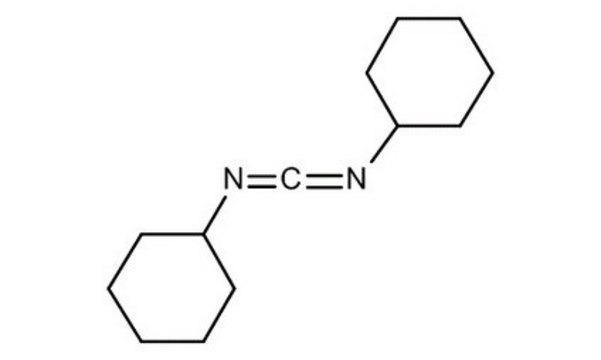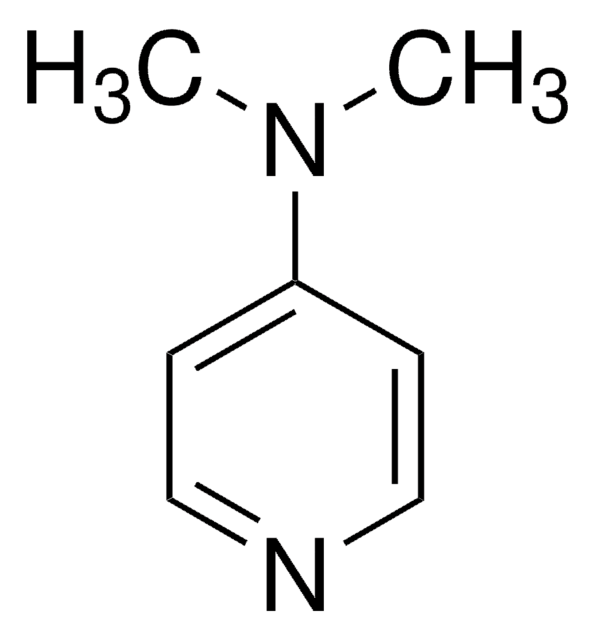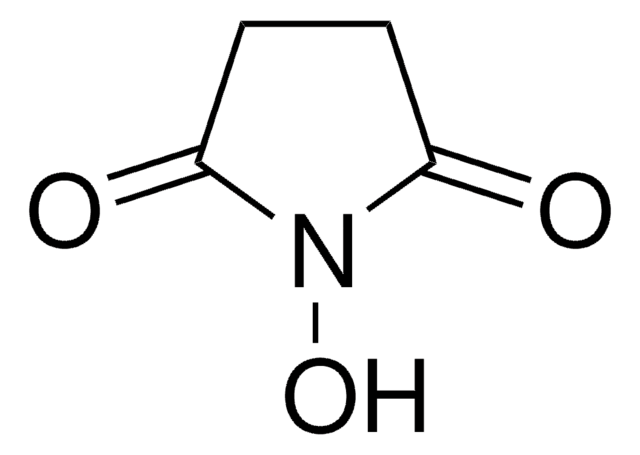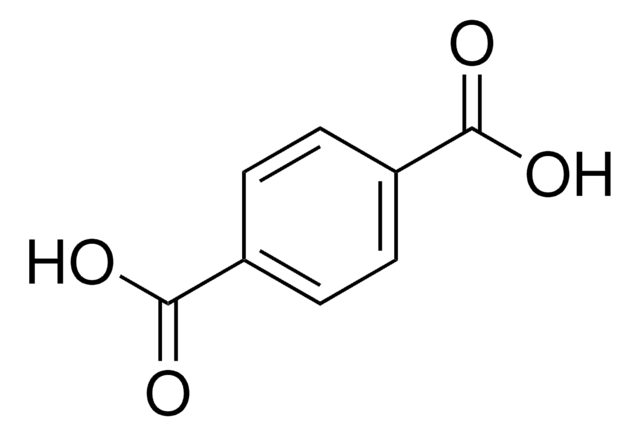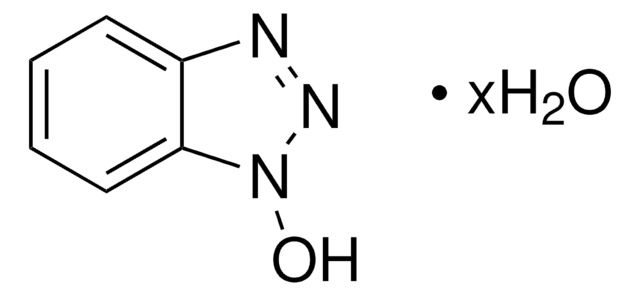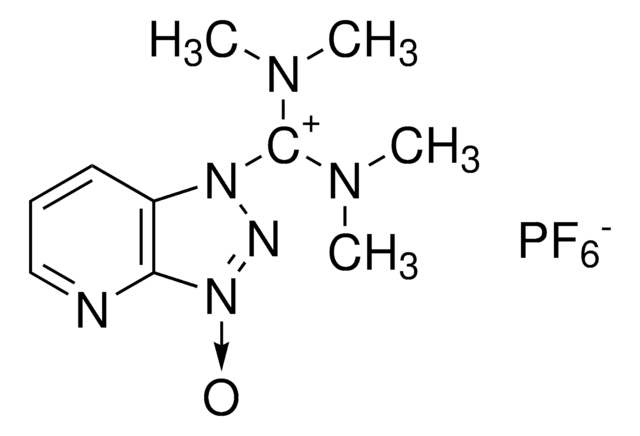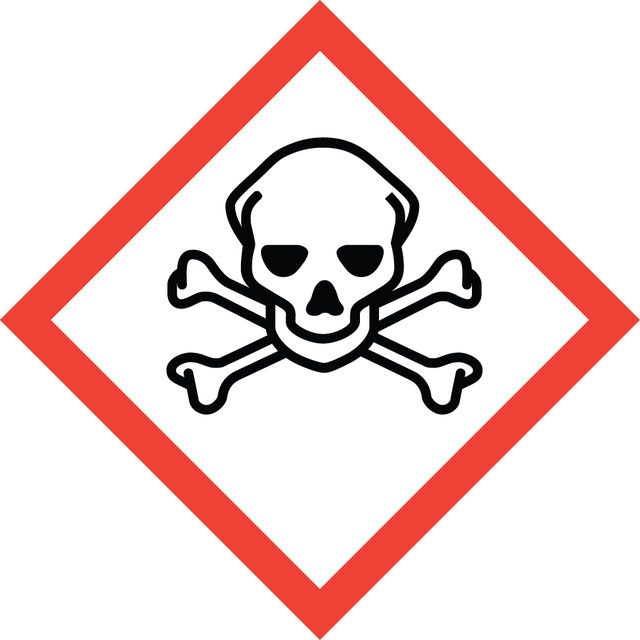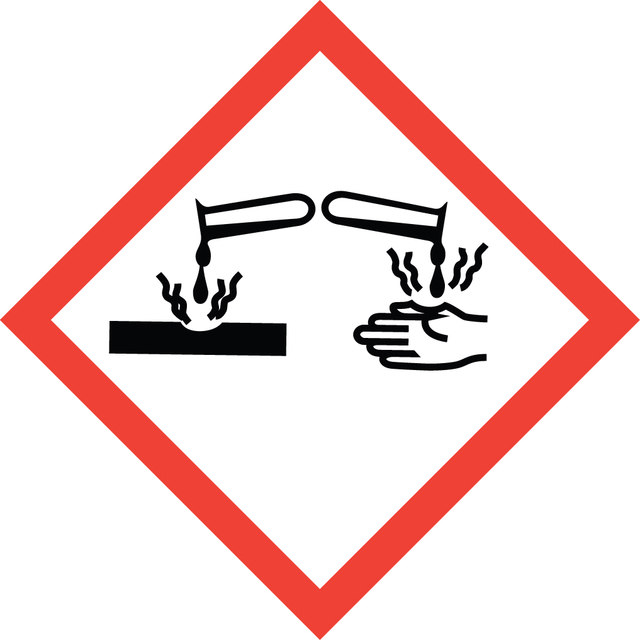All Photos(1)
About This Item
Linear Formula:
C6H11N=C=NC6H11
CAS Number:
Molecular Weight:
206.33
Beilstein:
610662
EC Number:
MDL number:
UNSPSC Code:
12352200
Recommended Products
bp
122-124 °C/6 mmHg (lit.)
mp
34-35 °C (lit.)
SMILES string
C1CCC(CC1)N=C=NC2CCCCC2
InChI
1S/C13H22N2/c1-3-7-12(8-4-1)14-11-15-13-9-5-2-6-10-13/h12-13H,1-10H2
InChI key
QOSSAOTZNIDXMA-UHFFFAOYSA-N
Looking for similar products? Visit Product Comparison Guide
Signal Word
Danger
Hazard Statements
Precautionary Statements
Hazard Classifications
Acute Tox. 3 Dermal - Acute Tox. 4 Oral - Eye Dam. 1 - Skin Sens. 1
Storage Class Code
6.1B - Non-combustible acute toxic Cat. 1 and 2 / very toxic hazardous materials
WGK
WGK 3
Flash Point(F)
235.4 °F - closed cup
Flash Point(C)
113 °C - closed cup
Personal Protective Equipment
dust mask type N95 (US), Eyeshields, Gloves
Regulatory Information
新产品
Choose from one of the most recent versions:
Already Own This Product?
Find documentation for the products that you have recently purchased in the Document Library.
Simona Mura et al.
International journal of nanomedicine, 6, 2591-2605 (2011-11-25)
Because of the described hazards related to inhalation of manufactured nanoparticles, we investigated the lung toxicity of biodegradable poly (lactide-co-glycolide) (PLGA) nanoparticles displaying various surface properties on human bronchial Calu-3 cells. Positively and negatively charged as well as neutral nanoparticles
Masashi Toei et al.
The Journal of biological chemistry, 288(36), 25717-25726 (2013-07-31)
N,N-Dicyclohexylcarbodiimide (DCCD) is a classical inhibitor of the F0F1-ATP synthase (F0F1), which covalently binds to the highly conserved carboxylic acid of the proteolipid subunit (c subunit) in F0. Although it is well known that DCCD modification of the c subunit
Denys Pogoryelov et al.
Nature chemical biology, 6(12), 891-899 (2010-10-26)
The microscopic mechanism of coupled c-ring rotation and ion translocation in F(1)F(o)-ATP synthases is unknown. Here we present conclusive evidence supporting the notion that the ability of c-rings to rotate within the F(o) complex derives from the interplay between the
Ryutaro Tokutsu et al.
Proceedings of the National Academy of Sciences of the United States of America, 110(24), 10016-10021 (2013-05-30)
Plants and green algae have a low pH-inducible mechanism in photosystem II (PSII) that dissipates excess light energy, measured as the nonphotochemical quenching of chlorophyll fluorescence (qE). Recently, nonphotochemical quenching 4 (npq4), a mutant strain of the green alga Chlamydomonas
Fatemeh Zeinali Nasrabadi et al.
Molecular diversity, 15(3), 791-798 (2011-03-23)
Reactions of (N-isocyanimino)triphenylphosphorane with N,N-dicyclohexylcarbodiimide in the presence of aromatic (or heteroaromatic) carboxylic acids proceed smoothly at room temperature and in neutral conditions to afford sterically congested 1,3,4-oxadiazole derivatives in high yields. The reaction proceeds smoothly and cleanly under mild
Our team of scientists has experience in all areas of research including Life Science, Material Science, Chemical Synthesis, Chromatography, Analytical and many others.
Contact Technical Service
